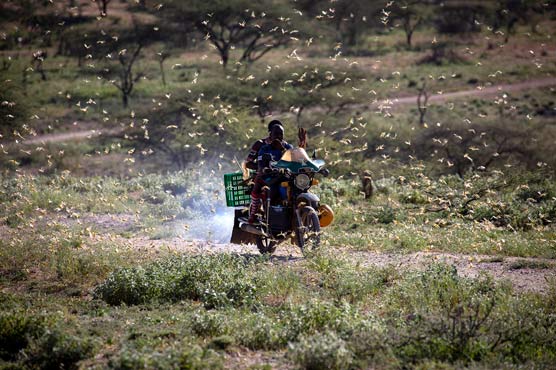New app tracks Kenya's desert locusts

Locust numbers, the worst in three generations, surged in East Africa and the Red Sea region in 2019
(Reuters) - In Turkana, Kenya’s poorest region, Achilo Christopher is tackling a new generation of locusts, armed with only his mobile phone and his wits.
He is a locust scout, trained and supported by the United Nations Food and Agriculture Organization to track and log information about the swarms, using a new application, E-Locusts.
"So I go look for locusts, where they are. I take pictures, I upload videos of their movement and also advise which kind of control can be used," he said.
The information is sent in real-time and logged in a database in Lodwar, the largest town in north-western Kenya. Technical teams use the data to decide what to do next.
"The scouts in the field help us by indicating where there are locusts. That information will guide us in making decisions, in terms of resource mobilisation and planning for control and surveillance," explained Gabriel Okata, a crops officer from Turkana.
Control measures include spraying the pests with insecticide before they become airborne.
Locust numbers, the worst in three generations, surged in East Africa and the Red Sea region in late 2019 and early this year. Encouraged by unseasonably wet weather and dispersed by a record number of cyclones.
The young locusts in Turkana are already eating everything in sight, devastating farmland and grazing areas.
"Within sometime all the trees are just naked," said Achilo Christopher, pointing at the locusts feeding on the acacia trees and maize crop behind him.

